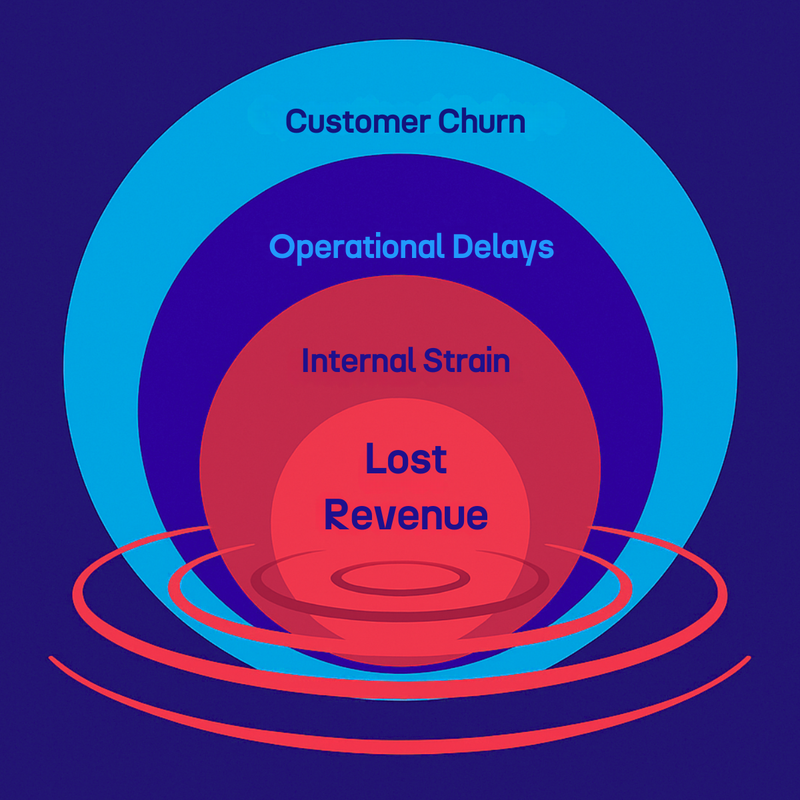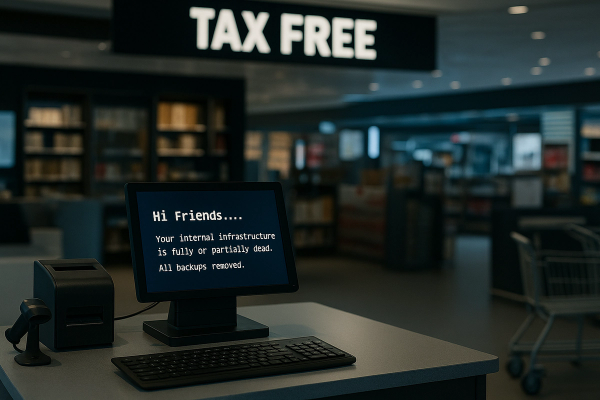The real cost of poor customer support: Real business risks and how to prevent them

In a digital-first economy, most companies invest in technology to optimize performance. But even the most advanced infrastructure can't offset the damage caused by poor customer support.
Delayed responses, unclear escalation paths, or a lack of 24/7 coverage can quickly cripple operations and compromise customer trust, especially when failures occur at critical moments. As Murphy’s law suggests they will.
Yet, many businesses continue to treat support as a back-office function, until something breaks. That mistake can prove costly.
Is your customer support a ticking time bomb?
Customer support is often relegated to the background, noticed only when it breaks. But when it does, the fallout is swift and far-reaching. The impact goes beyond lost sales. It erodes trust, dents your brand, strains internal teams, and in worst cases, permanently damages customer relationships.
Consider this scenario: a retail store relies on a fleet of payment terminals. Suddenly, several stop working. Transactions freeze. Staff scramble to troubleshoot. With no immediate access to expert support, hours of revenue vanish. Customers walk out, many for good.
This isn’t hypothetical. In 2022, 61% of consumers switched brands after a single bad experience, according to PwC’s Future of Customer Experience report. In critical service environments like retail, finance, or logistics, a delayed support response can trigger a domino effect of operational disruption and customer churn.
British Airways (2017): IT failure grounds 75,000 passengers
In May 2017, a power supply issue at a British Airways data centre triggered a global IT outage that cancelled over 400 flights and stranded 75,000 passengers. While the technical fault was localised, the broader failure stemmed from poor escalation procedures and lack of coordinated support.
The incident exposed critical weaknesses in operational resilience and cost the airline an estimated £80 million in compensation, rebooking, and reputational damage.
Target (2019): Point-of-sale meltdown across the U.S.
In June 2019, Target experienced a nationwide outage that brought its point-of-sale (POS) systems to a standstill for several hours during peak weekend shopping. With no immediate support resolution in place, staff were unable to process payments, and thousands of customers abandoned their carts in-store.
The outage affected over 1,800 locations and triggered widespread frustration, amplified across social media. While Target issued a prompt and transparent apology, the incident highlighted the vulnerability of retail operations without rapid-response support systems.
Healthcare IT outages: manual workarounds in a digital system
In 2023, several NHS trusts across the UK faced critical IT system outages that disrupted access to patient records, appointment systems, and diagnostic tools.
With no immediate support from technology providers, clinicians had to revert to manual processes—adding delays to time-sensitive care.
Although the incidents were not caused by cyberattacks, the lack of a robust incident response framework exposed patients to avoidable risk and underscored the life-critical nature of responsive IT support in healthcare.
What are the hidden costs of poor customer support?
When support fails, the cost is rarely, if ever, just technical. It ripples across the entire organisation, impacting revenue, operations, morale, and brand equity.
Research by Zendesk found that 61% of consumers will switch to a competitor after just one bad service experience. In high-volume or high-stakes sectors like healthcare, logistics, retail, and finance, even brief disruptions can have significant consequences.
Customer expectations are also rising. Salesforce reports that 88% of customers consider the experience a company provides to be as important as its products or services.

Common business impacts include:
- Lost revenue: According to ITIC’s 2023 Cost of Downtime Survey, 91% of enterprises estimate the cost of an hour of downtime exceeds $300,000. In retail environments, that number can exceed $100,000 per hour.
- Customer churn: A single bad interaction can sever a long-term relationship. PwC found that 32% of customers would stop doing business with a brand they previously loved after just one negative experience.
- Operational delays: When IT support is slow or absent, business-critical functions, like payroll, logistics, or point-of-sale systems, grind to a halt, leading to cascading disruptions.
- Internal strain: Without structured support, frontline staff are pulled into firefighting mode. This not only drains productivity but also adds stress to teams already managing core operations.
- Brand damage: Unhappy customers rarely leave quietly. Deloitte reports that 60% of those who experience poor service will tell at least three other people, amplifying the impact through word of mouth and online reviews.
In this environment, weak support isn't just a liability. It’s a competitive disadvantage.
What does a high-functioning support model look like?
As a business scales, support must evolve. Not simply by growing in headcount but improve in capability. That doesn’t mean more call center agents. It means building an intelligent, proactive, and responsive support model, one that prevents issues before they affect operations.
Here’s what that looks like:
- 24/7 availability: Your customers don’t work on your schedule. Global businesses demand round-the-clock support.
- Industry-specific expertise: Context matters. A support engineer who understands your sector resolves issues faster, and often pre-empts them altogether.
- Clear escalation paths: A clear chain of escalation prevents small issues from spiralling into business-critical failures. Everyone knows who to call, when, and why.
- Proactive monitoring and automation: AI-driven monitoring tools flag anomalies in real-time. Automated scripts can resolve known issues before they affect customers, while freeing human agents to focus on complex problems.
- System integration: Support should not sit in a silo. Integration with ticketing and operational systems ensures full visibility and better coordination across teams.
You can’t control when a system fails. But you can control how prepared your organization is to respond when it does.
Can you afford to ignore the risk?
The question for most businesses is no longer whether to invest in better support, but how urgently.
Support is not just about fixing issues. It is more helpful to think about it as a preventive measure, meant to preserve business continuity. In highly regulated sectors, it's also about compliance.
A high-performing support function isn’t just a safeguard; it’s a competitive advantage. Ask yourself this: how quickly can we respond to critical failures? Do we have industry-specific support expertise? Are we preventing issues, or are we merely reacting to them as and when they happen?
When technology is central to how you serve customers, the real test isn’t whether systems break, but when – and how quickly and effectively you respond when they do.
How Travel Retail Norway handled a hacking attack

When a ransomware attack shut down digital operations across four airports, Travel Retail Norway didn’t panic.
Their response offers practical lessons in incident handling, leadership under pressure, and cloud-first recovery, showing how fast decisions and cultural resilience can keep operations moving when everything else stops.